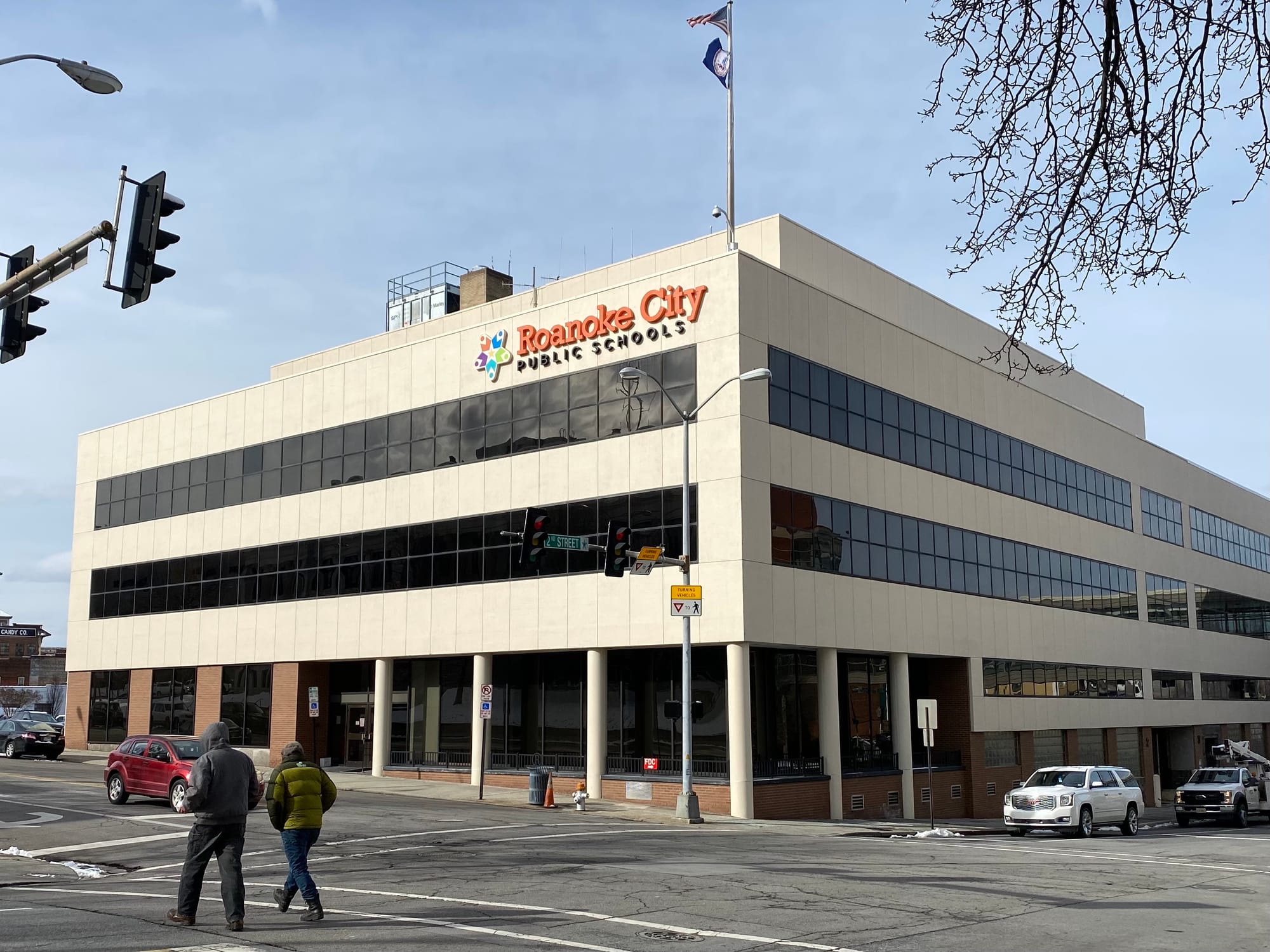Roanoke City School Buildings To Go Solar in First Such Project As County Weighs Similar Bid
The company will own the solar array and sell the electricity generated back to the school system at a lower rate than it's currently paying.

Seven Roanoke school buildings will be outfitted with rooftop solar panels as part of an agreement with a Staunton-based company — the first such project for city-owned buildings.
Secure Solar Futures says it will install 3,667 solar panels this year on two elementary schools, four middle schools and the new administration headquarters in the former Roanoke Times building downtown.
The company will own the solar array and sell the electricity generated back to the school system, “at a cost generally lower than the rate charged by the local electric utility” for the duration of the 25-year power purchase agreement, according to a company press release.
“I know in my circles there’s some people super excited that we are getting into solar panels, and may be the first city buildings to do so,” Eli Jamison, chair of the school board, said at a meeting last month.
In addition, Secure Solar Futures says it will help the school district run a program to train high school students as solar power technicians.
Erik Curren, a company spokesperson, described the initiative as “a combination of classroom and practical work that would be run in conjunction with a local community college and may involve opportunities for career placement for successful graduates of the program.”
Roanoke City Council on Tuesday approved the school board’s request to move forward with its plans.
Roanoke’s new climate action plan — which City Council recently adopted into its guiding master plan — calls on the city to reduce greenhouse gas emissions from city buildings.
The plan says Roanoke should add solar “to the top energy-intensive buildings and newly replaced roofs.”
None of the city’s 44 buildings currently has solar panels, sustainability coordinator Leigh Anne Weitzenfeld said last summer. The climate plan says city staff need to determine whether to own and maintain solar panels on city buildings or go through a similar power purchase agreement that the city schools have adopted.
School officials believe the solar array will save the district $8.4 million in energy costs over the next 25 years and cost $5.4 million, for an overall savings of about $3 million, according to a district pamphlet. In the first year, the district would pay $187,339 in fees but save $246,783 in energy costs, for a net savings of $59,445.
At the end of the 25-year agreement, the district would then take ownership of the solar panels, which have a 35- to 40-year lifespan, per the company.
The electricity generated from the solar panels in the first year would be enough to power 315 homes, according to the company, and would offset almost 39 percent of the energy consumed by the seven buildings.
Secure Solar Futures says the panels will be manufactured by the Chinese company Trina Solar. Panels will go up at Fallon Park and Fishburn Park elementary schools; James Breckinridge, John P. Fishwick, Lucy Addison, and Woodrow Wilson middle schools; and the William B. Robertson Central Administration building on Campbell Avenue.
In Roanoke County, meanwhile, school officials are exploring the possibility of adding rooftop solar to Cave Spring High School.
The school board on Thursday is expected to decide whether to enter into a 25-year power purchase agreement with Sun Tribe, a Charlottesville company, for a system that could power up to 85 percent of the school building’s energy usage.
The draft agreement would require the district to buy power produced by the panels at a rate roughly 20 percent less than its current electric rates, according to school board records.
The district began exploring solar about a year and a half ago mostly out of budget concerns, Todd Kageals, director of facilities and operations at Roanoke County Public Schools, said at a school board meeting earlier this month.
One option is for the district to own the solar panels itself, Kageals said, but that “requires a substantial initial investment.” Another option is a purchase power agreement.
Kageals said last year the district was $1 million over budget on utility bills.
“Every dollar that goes into utilities is a dollar that doesn't go to educating a child,” he said.

